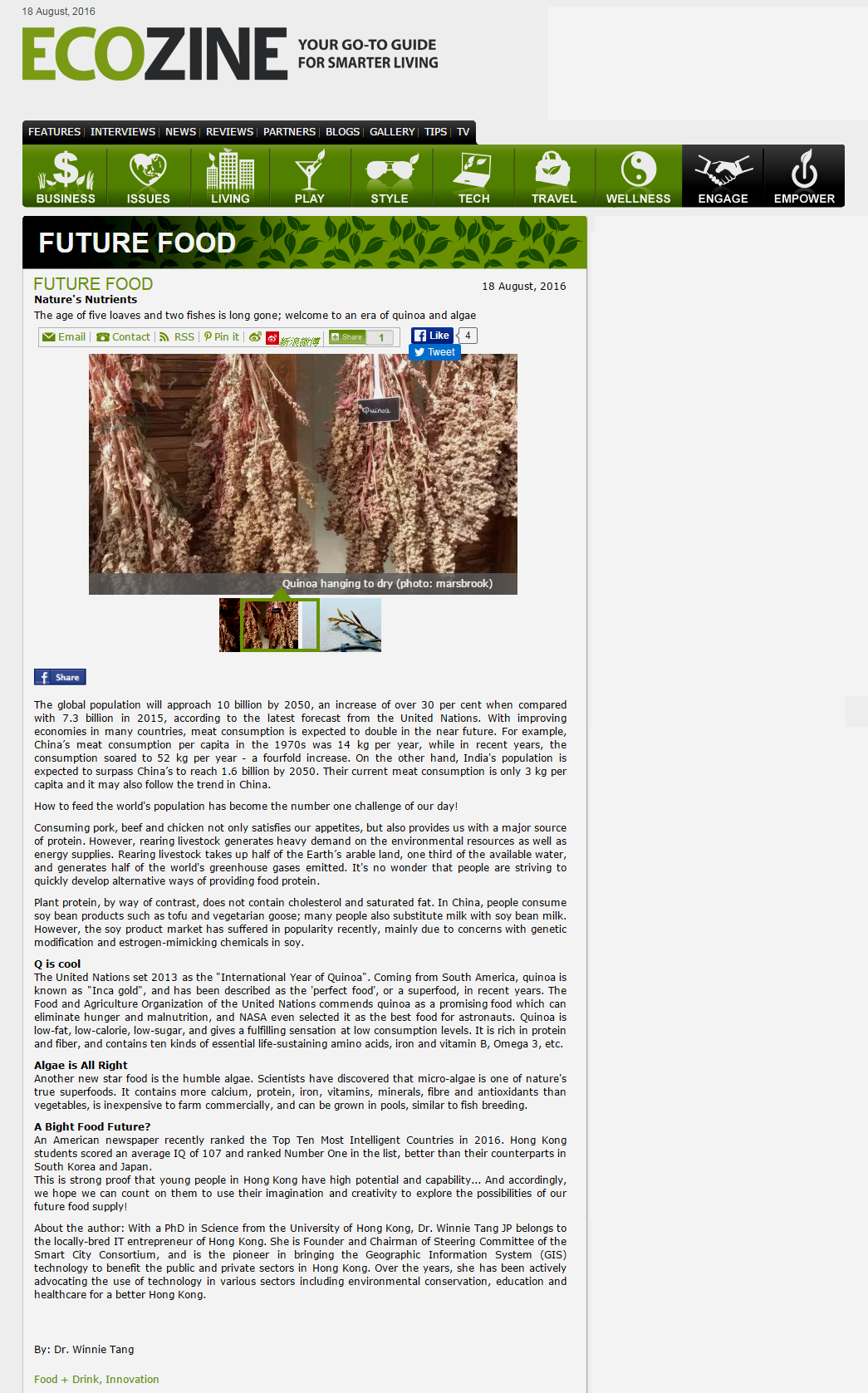網上版請按此

Future Food
The global population will approach 10 billion by 2050, an increase of over 30 per cent when compared with 7.3 billion in 2015, according to the latest forecast from the United Nations. With improving economies in many countries, meat consumption is expected to double in the near future. For example, China's meat consumption per capita in the 1970s was 14 kg per year, while in recent years, the consumption soared to 52 kg per year - a fourfold increase. On the other hand, India's population is expected to surpass China's to reach 1.6 billion by 2050. Their current meat consumption is only 3 kg per capita and it may also follow the trend in China.
How to feed the world's population has become the number one challenge of our day!
Consuming pork, beef and chicken not only satisfies our appetites, but also provides us with a major source of protein. However, rearing livestock generates heavy demand on the environmental resources as well as energy supplies. Rearing livestock takes up half of the Earth's arable land, one third of the available water, and generates half of the world's greenhouse gases emitted. It's no wonder that people are striving to quickly develop alternative ways of providing food protein.
Plant protein, by way of contrast, does not contain cholesterol and saturated fat. In China, people consume soy bean products such as tofu and vegetarian goose; many people also substitute milk with soy bean milk. However, the soy product market has suffered in popularity recently, mainly due to concerns with genetic modification and estrogen-mimicking chemicals in soy.
Q is cool
The United Nations set 2013 as the "International Year of Quinoa". Coming from South America, quinoa is known as "Inca gold", and has been described as the 'perfect food', or a superfood, in recent years. The Food and Agriculture Organization of the United Nations commends quinoa as a promising food which can eliminate hunger and malnutrition, and NASA even selected it as the best food for astronauts. Quinoa is low-fat, low-calorie, low-sugar, and gives a fulfilling sensation at low consumption levels. It is rich in protein and fiber, and contains ten kinds of essential life-sustaining amino acids, iron and vitamin B, Omega 3, etc.
Algae is All Right
Another new star food is the humble algae. Scientists have discovered that micro-algae is one of nature's true superfoods. It contains more calcium, protein, iron, vitamins, minerals, fibre and antioxidants than vegetables, is inexpensive to farm commercially, and can be grown in pools, similar to fish breeding.
A Bight Food Future?
An American newspaper recently ranked the Top Ten Most Intelligent Countries in 2016. Hong Kong students scored an average IQ of 107 and ranked Number One in the list, better than their counterparts in South Korea and Japan.
This is strong proof that young people in Hong Kong have high potential and capability... And accordingly, we hope we can count on them to use their imagination and creativity to explore the possibilities of our future food supply!
About the author: With a PhD in Science from the University of Hong Kong, Dr. Winnie Tang JP belongs to the locally-bred IT entrepreneur of Hong Kong. She is Founder and Chairman of Steering Committee of the Smart City Consortium, and is the pioneer in bringing the Geographic Information System (GIS) technology to benefit the public and private sectors in Hong Kong. Over the years, she has been actively advocating the use of technology in various sectors including environmental conservation, education and healthcare for a better Hong Kong.
Dr Winnie Tang
Chairman of the Steering Committee of the Smart City Consortium